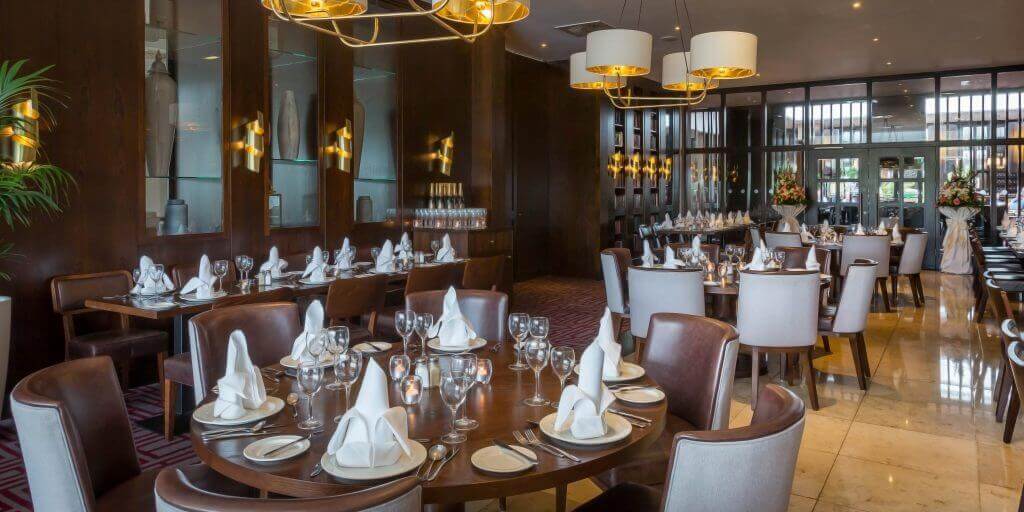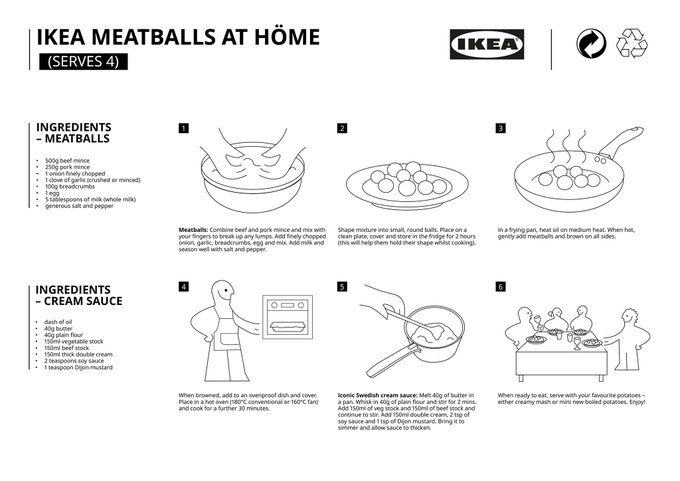
Many countries around the world have been in some sort of lockdown or restricted state now for many months.
NB: This is an article from Hotelchamp
Consumers have adjusted to this extreme change and are looking for ways to find enjoyment. After months of being inside, people want to go out and spend money. Food and beverage (F&B) is one of the best revenue opportunities that hotels have to offer exceptional experiences to a wide audience. Hotels can provide more value and added services for their guests, but can also appeal to non-guests too. For hotels who can provide F&B in-house, the creative control gives you the possibility to add additional revenue streams. During a time of recovery, you can test and figure out how to use your food and beverage to create unique experiences and increase revenue.
Looking at the hospitality industry as a whole, it’s clear to see that a huge amount of innovation has taken place this year. There are some lessons from the industry that hoteliers can apply to their own strategies to help drive their recovery. In this blog, we’ll take a look at how hoteliers can use and adjust their food and beverage strategies to focus on aiding recovery and setting up for long term success.
Gifts and packages
The festive season is coming
Start thinking about how your food and beverage offerings can tie into the festive season. Traditionally your restaurant may have sold a full dining room of Christmas Day lunches. This year, you might have to get more creative. Consider creating festive combos that customers can pre-order. Little Collins, a restaurant in Amsterdam, created Easter packs earlier this year. Customers could pre-order and pick-up the pack that contained homemade butter, hot-cross buns and a bottle of wine. Similarly, Regent Singapore have created a Mooncakes & Cocktails offer. Guests can enjoy a mooncake and cocktail pairing either in the bar or have it delivered to them.

Food is a love language
Create specific packages that highlight the food offerings you have. An Afternoon Tea or multi-course experience can be enjoyed by the purchaser or given as a gift. Alternatively, create stay offers that are specifically tailored to enjoying the food available on site. For example, the 30-hour Eat-cation from New World Millennium. This offer pairs room upgrades with generous food credit and discounts from Sunday to Thursday.

Reward diners who aren’t yet guests
Typically we’ve seen offers that reward hotel guests with food and beverage credit, but you can also flip it and reward restaurant diners with a voucher to stay with you. Sofitel Saigon Plaza is gifting vouchers for a stay at a later date to people dining at their restaurants. Their Dine & Stay offer is a great way to encourage these people to spend further with you in the future, either on an extended stay or more food and beverage.
Outsourcing and delivery
Utilise partnerships
The hotel industry has many successful cases of outsourcing F&B. One example is the Michelin-starred restaurant Al Fiori at The Langham, New York. The restaurant collaborates with the hotel and external parties like Uber for diners both on and off-site. This increases their reach, revenue and ultimately profitability. An innovative approach to an outsourcing partnership shows how creative thinking can positively impact the results.
Delivery as an ongoing strategy
In the past months, some hotel restaurants that have brought in revenue by including takeaway and delivery options. Many consumers have relied on these delivery services to order from different restaurants during the lockdown. But don’t stop delivery just because things are opening up again. In recent research by McKinsey, across Europe, approximately 35% to 55% of existing consumers intend to continue using food delivery more in the future.
Think outside the (takeaway) box
Don’t limit your hotel to just offering dinner for delivery. In Q2 this year, delivery companies noted a 50% increase in breakfast orders and an 80% increase in lunch orders. If you’re already producing breakfast and lunch for your guests, consider offering delivery for these early meals to make the most of the increased demand. Sofitel Legend The Grand Amsterdam has created some unique takeaway dining experiences for customers to enjoy. Their famous The Grand Afternoon Tea has been adapted into a takeaway version for guests and they also offer takeaway food and drinks to enjoy on a canal cruise too. And don’t forget Cocktail Hour too. Bars around Europe are utilising their resources and using delivery companies to reach a wider audience and sell cocktails for delivery.

Fine-dining at home
There’s no doubt that meal kits, such as Hello Fresh, have increased in popularity. But make-it-yourself doesn’t have to be limited to just an everyday meal. During lockdown, some restaurants created meal-kits for delivery, so customers could have a fine dining experience at home. From Michelin-starred meals to cooking your own burgers, these meal-kits came with instructions (and sometimes more background on the dish) for customers. Aside from the experiential part of this, it can also avoid a common issue with food delivery: the condition in which it arrives. In 2019, 23% of negative consumer comments received by Deliveroo mentioned food temperatures. These meal-kits can help to avoid these issues that some restaurants often face, as the cooking or assembly is done once it has been delivered.
Make yourself visible
Ordering delivery from a hotel restaurant isn’t something that would be top-of-mind for many non-hotel guests, so make sure that you’re included in their consideration set. Update your website and Google Business information to include that you offer delivery. This will help to increase your search visibility. Take it to your social channels as well. Work with your marketing team to promote your takeaway and delivery options by encouraging diners to use popular hashtags such as #TakeOutTuesday. Hashtags like this rose in use during lockdown to increase support for local businesses. If it fits with your branding, give it a go to see how it works for you.

Create an experience for your customers
Food and beverage, but make it virtual
Most of the world is still unable to travel freely and social distancing measures mean that we can’t experience our favourite restaurants as we’re used to. As a result of this, consumers are actively seeking how-to videos to show them how they can create restaurant-style food at home. Have your chef host a weekly cooking class like Relais & Chateau or invite your bar manager to lead a cocktail-making class. Provide easy-to-follow recipes and consider keeping the ingredients list basic, prioritizing simple recipes that use pantry staples.
Keep an eye on trends
If you go down the virtual guides road, keep an eye on the current trends that you could capitalise on. Remember the banana bread and sourdough bread period of lockdown? Google searches for “how to bake bread” rose globally in March. Simply sharing a signature recipe when these trends take off can help to increase your food and beverage visibility too. For example, Doubletree by Hilton shared their official chocolate chip cookie recipe and IKEA shared their famous Swedish meatballs recipe earlier in the year.

Good experience is valuable
When it comes to your food and beverage offerings, it’s crucial that both your hotel guests and non-guests have a good experience, but not just for the reason that you might think. Research by McKinsey found that restaurants that were leaders in customer experience during the 2008 global financial crisis, delivered around 3x greater cumulative return to shareholders. Not only is experience important for your guests, but it also impacts shareholders too.
Invest in innovation
Expand your outdoor dining
If you have an outdoor terrace or area that isn’t being completely utilised, consider investing in further developing it or optimise for safe outdoor dining. Many countries allow for social-distanced outdoor dining, so in some places, areas such as car parks are being converted for an outdoor dining experience.
Technology to take orders
Hotels have embraced the self-check-in for guests and new technology is also taking off for self-ordering in restaurants. If you haven’t yet explored this for your hotel restaurant or bar, this is something to look into, as there are signs that this technology not only is good for safety, it also increases the amount the table orders. Another example of using technology creatively is from New York restaurant Cote. They created a blind taste testing experience that can be purchased via a delivery app. The consumer answers taste-related questions, then the in-house sommelier chooses two wines to pair with the meal selected. The wine and meal are then delivered to the consumer with some information to create a unique experience at home.
Create a safe space
You probably saw the viral dining greenhouses at Mediamatic in Amsterdam earlier this year, but there are also other ways to encourage guests to feel safe to come back and dine with you. Installing a method of separation between tables and improving ventilation reassures guests that they are in a safe environment. A recent survey found that 77% of UK consumers think that these measures are important for feeling safe while eating out. If you already have these safety precautions in place, make sure to highlight this in a way that people researching to eat out can find them.
By combining offers and innovation, hotels can make the most of the current economic climate and consumer demand. Attractive offers and packages, increasing visibility and making sure guests and non-guests have a memorable experience are the keys to aiding recovery.





